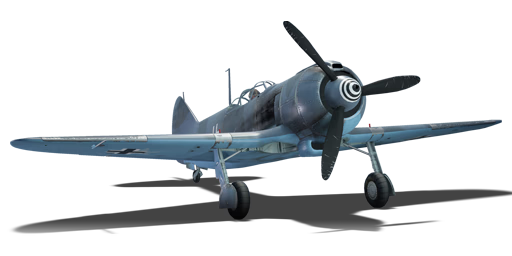

Aviation
▀La-5FN
III
Rank
AB
4.0
RB
3.7
SB
4.0
Battle rating
Germany
Game nation
Fighter
Main role

Premium vehicle
Status
General information
The La-5FN (Germany) is a premium German fighter. It has been in the game since the start of the Open Beta Test prior to Update 1.27 as an in-game premium vehicle purchasable with Golden Eagles, but was removed from in-game sale during the July 2021 Economy Update. It has since been made available for purchase with Golden Eagles during the 2023 "First Flight of the La-5" and the 2024 "Anniversary of the La-5’s First Flight!" flash sales.
Camouflages
Flight performance
Max speed
at 6,100 m
620576647594 km/h
Rate of Climb
2217.727.617.7 m/s
Turn time
1920.81820.1 s
Max altitude
11,350 m
Takeoff Run
341 m
Landing
flaps
flaps
Take-off
flaps
flaps
Combat
flaps
flaps
Air
brake
brake
General characteristics
Crew
1 person
Engine
Length
8.8 m
Wingspan
9.8 m
Wing Loading
190 kg/m²
Weight:
Base weight
3.023.112.943.1 t
Fuel in main tanks
0.34 t (40m)
Limits:
Max Speed Limit (IAS)
735 km/h
Mach Number Limit
0.77 M
G limit
≈ -13/13 G
Flap Speed Limit (IAS)
L / T / C
270 / 419 / 448 km/h
Gear Speed Limit (IAS)
310 km/h
Offensive armament
2 × 20 mm ShVAK cannon
Ammunition
340 rounds
Fire rate
720 shots/min
One-second Burst Mass
1.16 kg
| Belt | Belt filling | Armor penetration (mm) at a distance: | |||||
|---|---|---|---|---|---|---|---|
| 10 m | 100 m | 500 m | 1000 m | 1500 m | 2000 m | ||
| FI-T/AP-I | 28 | 24 | 14 | 7 | 4 | 2 | |
| FI-T/HEF/AP-I/FI-T | 28 | 24 | 14 | 7 | 4 | 2 | |
| HEF/FI-T/AP-I | 28 | 24 | 14 | 7 | 4 | 2 | |
| FI-T | 3 | 3 | 3 | 3 | 3 | 3 | |
| AP-I/FI-T/AP-I/AP-I | 28 | 24 | 14 | 7 | 4 | 2 | |
| AP-I/HEF/HEF/FI | 28 | 24 | 14 | 7 | 4 | 2 | |
Economy
Repair cost
AB
683 

RB
5,085 

SB
2,100 

Crew training
10,000 

Experts
115,000 

Aces
500 

Research Aces
640,000 

Reward multiplier
AB / RB / SB
 2 x (60 / 225 / 310) %
2 x (60 / 225 / 310) % 
 2 x 142 %
2 x 142 % 

Premium vehicle
All modifications are unlocked
Flight performance | |
|---|---|
Survivability |
|---|
Weaponry |
|---|
Rating by players
You must play more than 3 battles for the last week and more than 10 battles in a vehicle to rate it.
Like:
14
Flight performance:
Not enough ratings
Survivability:
Not enough ratings
Aerial combat:
Not enough ratings
Ground attack:
Not enough ratings
Balance:
Not enough ratings
Tips & Tricks
This space is currently empty
Do you know any interesting vehicle features?
Loading...
No articles about this vehicle yet
Become the first author and get rewards!
Write a guide, tell about interesting historical facts, make a tutorial or simply an interesting post.
No more content